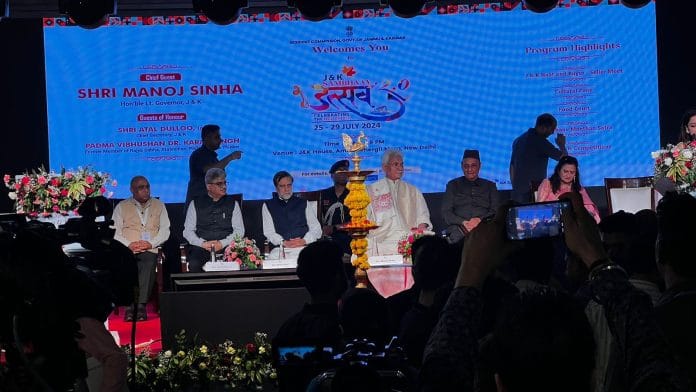New Delhi: Last-minute changes to programming, extremely low footfall, and a delayed inauguration—these were the defining features of the five-day event aimed at introducing Jammu and Kashmir’s craft, culture, and cuisine to Delhiites.
The delay at the J&K House was due to the UT’s Lieutenant Governor, Manoj Sinha, who arrived a good three hours late for the event’s inauguration. However, he did bring a crowd with him—a band of officials and guests who stayed as long as the L-G did.
The atmosphere at the exhibition lacked excitement, as not many people attended during the day when artisans and brand owners from across J&K waited inside their stalls. These stalls were decorated with cultural products such as Kashmiri shawls, dry fruits, willow bags, paper-mâché boxes, and instant kahwa and noon chai (pink tea mix powders). All this took place during the sticky afternoon at New Delhi’s J&K House on Amrita Shergill Marg, Lodhi Estate.
Sinha’s arrival around 6:30 pm was marked by the loud noises of a band. The event quickly gathered pace with his arrival, along with other important guests, including Congressman Karan Singh, MP Mian Altaf Ahmed Larvi, and Commissioner Secretary of J&K Department of Hospitality and Protocol Rashmi Singh, among others.
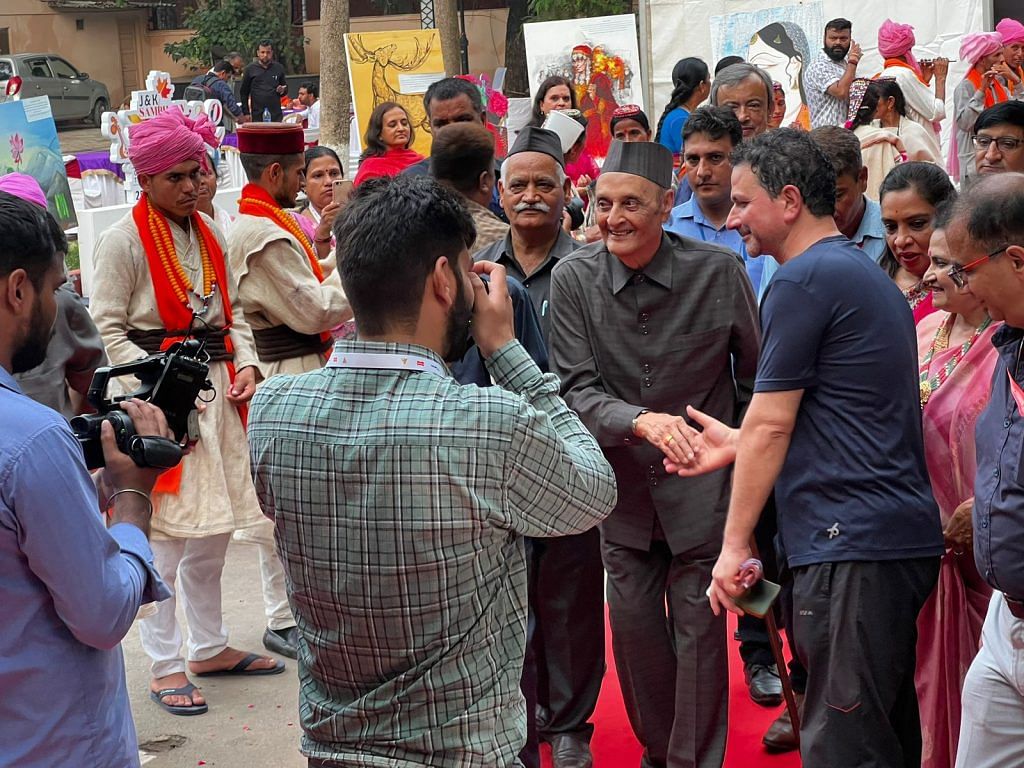
Before the event officially kicked off on the evening of 26 July, the entire day was spent with organisers making last-minute changes. Meanwhile, people occasionally visited the stalls, only to look at the products and move on without making any purchases.
“I have been sitting here since yesterday. I have brought handmade willow products for the people of Delhi, but I have barely made any sales so far,” said Bashir Ahmad, a willow maker from Kashmir whose brand, Peerpora Willow Works, is officially registered under the Department of Handicrafts and Handlooms. The 50-year-old had barely managed to earn Rs 2,000 by the evening of the second day of the exhibition.
Meanwhile, Sinha arrived with a crowd of guests who filled the front portion of the tent reserved for “VIP guests,” though most of them disappeared once L-G Sinha left after giving a 30-minute speech and watching a traditional dance performance from Ramban.
The five-day J&K Sambhaav Utsav 2.0, running from July 25 to 29, featured a variety of activities, including buyer-seller meetings, cultural performances, and a food court serving Kashmiri wazwan dishes and Jammu’s famous rajma. Sessions on investment opportunities, the media’s role in promoting J&K’s heritage, and other aspects of the region’s culture were also part of the programme. The first Sambhaav Utsav was held in February.
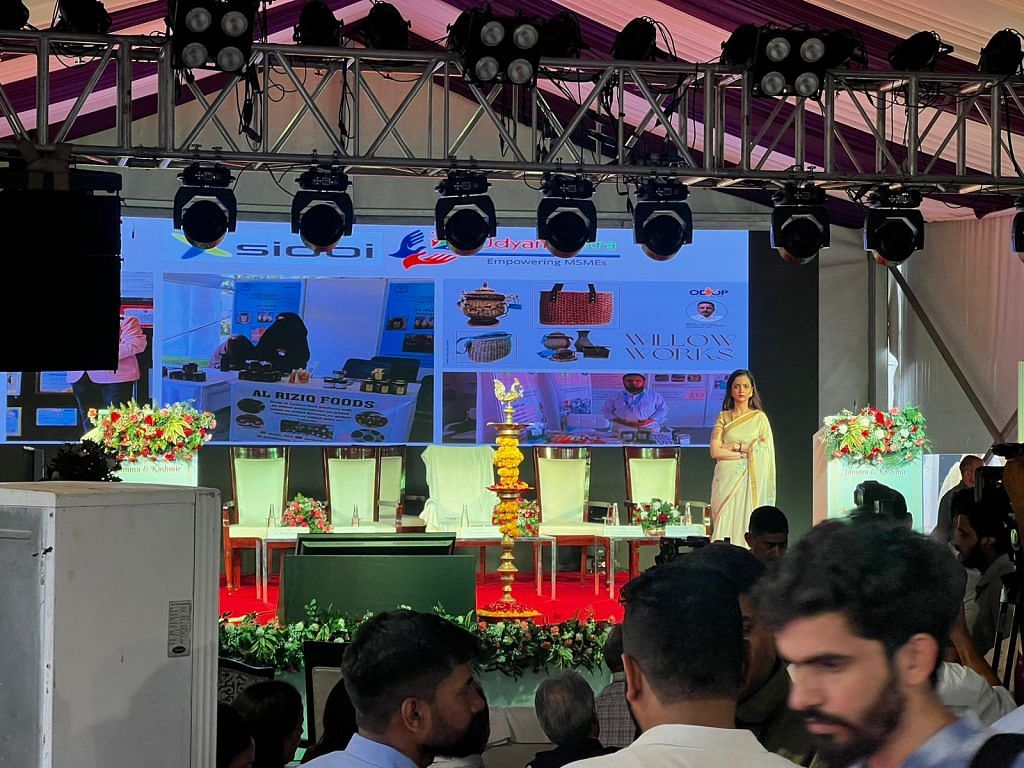
Promoting homegrown brands
The event consisted of a vast variety of cultural performances ranging from Kashmiri rouf dance to a Pahadi dance performed by women from Kishtwar called Guri. Bhag Devi, 50, a resident of Kishtwar was invited to perform with a group of eight middle-aged women. They wore handmade costumes prepared over 20 days. With a thick woollen off-white jacket wrapped around her, Devi gathered with her group around a fan to beat the scorching heat. Their heads were covered by colourful caps, with layers of silver jewellery around their necks.
While the group was excited to perform, the women were not sure about the purpose of the event or whether they would get paid, having travelled all the way to Delhi. “We were told that we have to dance. Someone mentioned that we might get paid but we don’t know yet,” Devi told ThePrint.
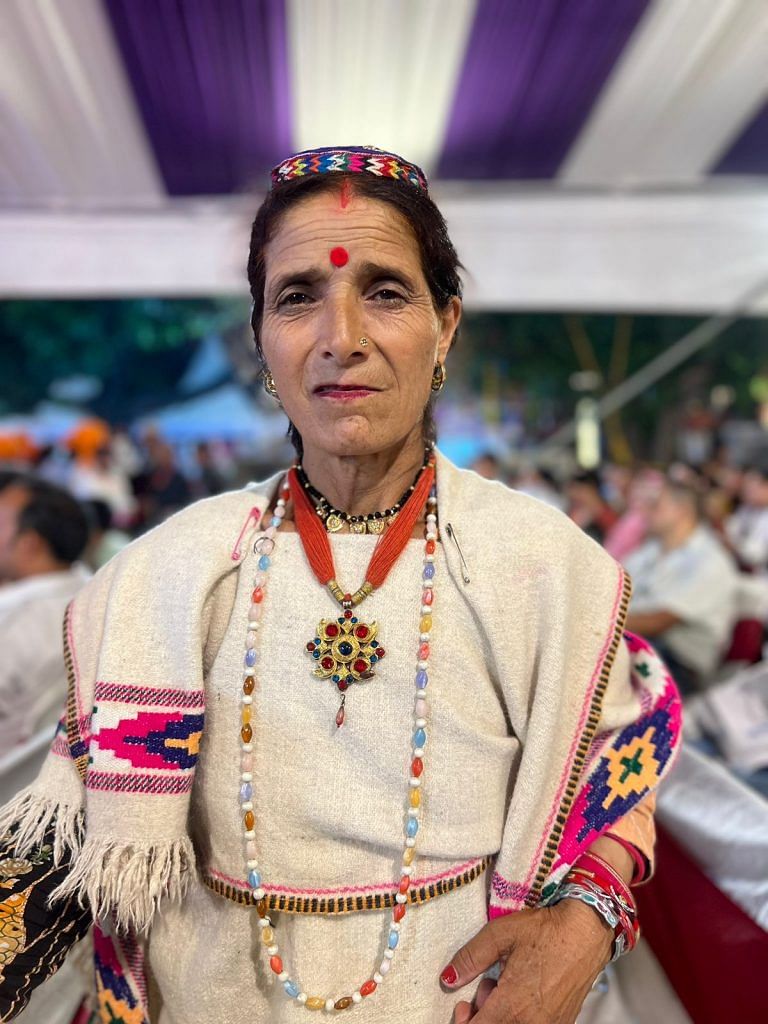
At one of the stalls, Sumeet Reen, a 44-year-old entrepreneur, was excited to promote clothing items representing brand Runway Diaries and Jammu’s culture. Runway Diaries was hosting a variety of colourful dresses inspired by the Dogri tradition. “We are feeling very positive. People are coming to us and looking at Dogri work. We have not made any sales yet but we are hopeful,” she said.
Similarly, Lubna Mirza, owner of Shawl Story, focuses on restoring and refurbishing the indigenous art Kani. She said that her purpose behind attending the exhibition was to spread awareness about the importance of Kani, one of the oldest Kashmir shawls originating from the Kanihama area. “Such events are important for branding purposes. They see our brand here and reach out to us later. So it is a platform to promote our visibility,” she said.
For the future
Reiterating the UT administration’s commitment to connecting artisans and entrepreneurs with global buyers, L-G Sinha noted J&K’s transformation and historic growth trajectory. “The fast-paced development in the past few years is a testimony to our strong resolve towards the holistic development of the UT,” he said, adding that J&K is witnessing a revival of its cultural identity and becoming a preferred destination for tourists, filmmakers, and investors.
During the session titled “Role of Media in Promoting Growth and Development” of crafts and heritage, Rashmi Singh and a group of Jammu artisans, filmmakers, journalists, and other government officials discussed the need to promote the heritage of J&K by shooting films in the region, holding film and cultural festivals, promoting in-grown brands, and engaging social media influencers.
“Through social media influencers, people will be able to know about their culture and heritage on their fingertips through their phones. This is how the future is supposed to be,” said Navneet Sehgal, chairman of Prasar Bharti.
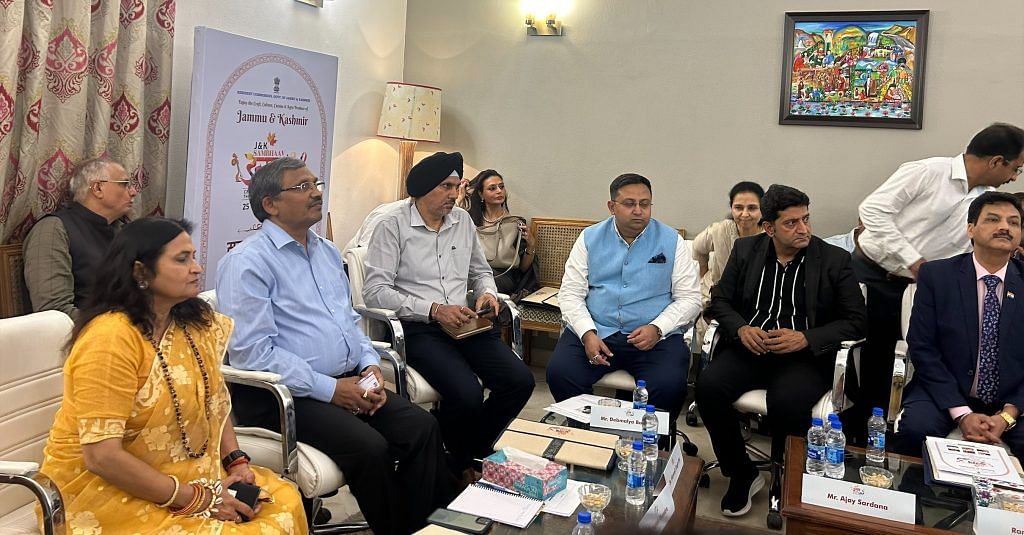
In the last session, titled “Harnessing Investment Opportunities & Promoting Start-ups”, the panel comprising Rashmi Singh, Satish Chandra (chairperson of J&K Real Estate Regulatory Authority), Vikramjit Singh (Commissioner Secretary in the Industries and Commerce Department), and several other bureaucrats, business investors, and stakeholders from Kashmir and elsewhere, discussed various strategies to attract investors to J&K. They focused on the region’s resources such as crafts, cuisine, tourism, and agriculture.
Kajal, director at the Department of Promotion of Industry and Internal Trade (DPIIT), Delhi, said that 753 startups will be coming up in J&K. However, she noted there is potential for more. “We need more women-led startups and we need to indulge youth in the process,” she noted.
Meanwhile, Chandra said that J&K is suitable for all kinds of industries and startups, including the service sector, education, real estate, health, tourism and a lot more. “We just need to play our roles efficiently,” he said.
(Edited by Prashant)



